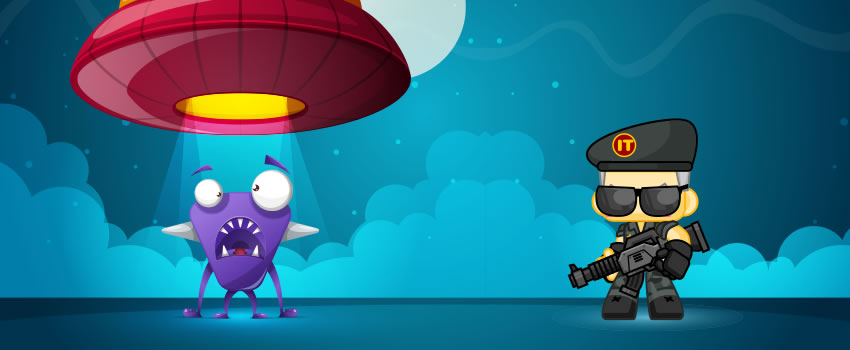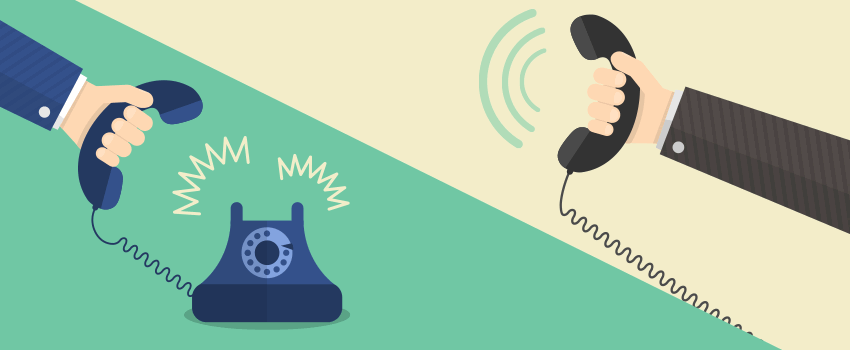
Does Your IT Service Desk Really Need a Chatbot?
Nowadays, chatbots seem to be all the rage and it’s fair to say that, over the past couple of years, they’ve developed into a pretty useful tool for many business-to-consumer (B2C) organizations. Jump onto any major commercial website these days and it’s likely you’ll have the option to chat with a bot.
Just the other day I upgraded my mobile phone and I didn’t speak to a human at all – the bot took care of me and my needs, and I admit it was pretty awesome. Chatbots aren’t just for answering basic customer enquiries anymore, they’re now changing organizational structures and actually have the ability to act as first-line support.
On the IT service desk, where ticket numbers might be high and staff resources might be low, this is certainly appealing. However, the question is: Does your IT service desk really need a chatbot, or might it actually do more harm than good?
In this blog post, I explore the advantages and disadvantages of the chatbot to help you decide if it’s right for your IT support organization. Starting with the advantages, there are, in my opinion, four key reasons why organizations love their chatbots and why your IT service desk might benefit from employing the technology. However, it’s not all flowers and sunshine in the chatbot world. There are some distinct disadvantages to the technology that might make you think twice about making a chatbot the newest addition to your IT service desk team.
Here we go…
In this blog post, @Joe_the_IT_guy explores the advantages and disadvantages of the chatbot to help you decide if it’s right for your IT support organization. Share on XAdvantage #1: Chatbots Work Quickly
Chatbots, and other bots, have the ability to do whatever they’re programmed to do. This could include providing links to knowledge base articles or categorizing and triaging a ticket based on information the user provides.
Chatbots do this in much the same way as your human IT service desk agents would, only they have the ability to recall information far faster than any human being. For every hesitation your agents make while trying to remember the answer to a question, the chatbot has already recalled this, provided the answer, and moved on to the next issue – or even the next customer. The advantage here is that your chatbot will get through a much larger workload than any of your team members can and even has the ability to work faster than a small team combined.
Chatbots can thus be great for removing the basic first-line responsibilities away from your human agents, clearing them to work on more complex tasks.
Advantage #2: Chatbots Reduce Human Error
Chatbots remove the risk of human error by always following what they’re programmed to do (albeit potentially learning “better ways” along the way). And because you program your chatbot to do what you want – say, for example, triaging a ticket to a certain resolver team based on its categorization – the chatbot knows where to send the ticket when your IT service desk agents might not.
If you have a lot of different categories and many resolving teams it can be easy for agents to forget which team handles which ticket type and it’s therefore difficult to triage some tickets correctly. You can therefore use a chatbot to reduce your bounce-back rate and improve your triage service level agreement (SLA) performance.
Advantage #3: Chatbots Work Around the Clock
Chatbots never need to take time out. There’s no need for breaks, no vacations, no sick days – they simply work all day, every day.
If you don’t run a 24/7 IT service desk, then your chatbots are still available to provide assistance when your IT service desk agents have all gone home.
Thus, if any of your customer feedback has pointed out that the existing level of IT support availability isn’t sufficient, then a chatbot could certainly help you out.
Advantage #4: Chatbots Save Money
Because chatbots don’t take time off, don’t ask for sick pay, or don’t go on holiday, and because they work quickly and consistently, they have the ability to save your organization money.
When you start looking at numbers such as your agents’ hourly rate and the output they can provide versus the output of your chatbot, you’re likely to find significant savings stacking up in the long-run.
Support people are definitely still required but chatbots can be employed, with the right balance, to provide a better quality of service while potentially saving money.
Disadvantage #1: Chatbots are Needy
You can’t just turn on a chatbot and let it get on with its job. It will require a lot of hard work upfront to program it to do what you want, and the more complex the task, the more work it will require. Chatbots know what you teach them but nothing more – a chatbot will do what you tell it to, but it can’t learn by itself (unless it employs machine learning).
The ever-changing nature of IT could mean that something you taught your chatbot could be outdated pretty quickly – or a business/IT policy might change – which means that you’ll need to retrain it. It would be wise to remember this, and ensure that your organization has the resources to develop, train, and retrain its chatbot as needed.
Disadvantage #2: Chatbots are Not Universally Loved
Some people really don’t like talking to bots. After all, they’re pretty new to the world of support and many users haven’t yet grasped the concept of conversing (naturally) with a machine.
Imagine that you have a really unhappy user who needs to report an IT incident. They want to speak with an apologetic and helpful human, and to get some sympathy, but instead they’re faced with an unemotional bot and this just makes them even angrier.
You’ll need to consider the kind of users you cater for – are they going to be happy with a chatbot or are they likely to kick up a fuss (or perhaps avoid your IT support capability altogether)? If you aren’t sure, then run a customer survey to get a feel for their opinions. At the end of the day, your service desk exists to serve its customers and if they don’t like the idea of a chatbot it could do your IT department more harm than good.
Disadvantage #3: Chatbots Can “Break”
While it’s true that your chatbot doesn’t need a vacation or regular breaks from the desk, there’s every possibility that it might not work as needed.
If this happens, you’ll need to have a back-up plan in place to avoid the increase in tickets now hitting your service desk overwhelming your agents. Depending on how much work your chatbot does for the service desk, you might find your agents’ workloads to be unmanageable when something goes wrong. (But, on the other hand, it’s a sign of the upside of the chatbot when working).
Disadvantage #4: Chatbots Can Be Costly
In complete contradiction to the final advantage point (that chatbots can save money), it’s also true that chatbots are an additional cost. Thus, while they can definitely save your organization money in the long run, you’ll need to consider the upfront and continual development costs – and how these stack-up against potential savings – before you go ahead with your decision to employ a chatbot.
Assessing the complexity of your processes will help you to decide how much developmental work will be needed and how regularly your processes change will indicate how much ongoing effort you might need to put in.
If your budget is tight, and you have more important priorities at the moment, it might not be the right time for your IT service desk to employ a chatbot.
What are your chatbot experiences? Do you love them or loathe them? Please let me know in the comments below.






